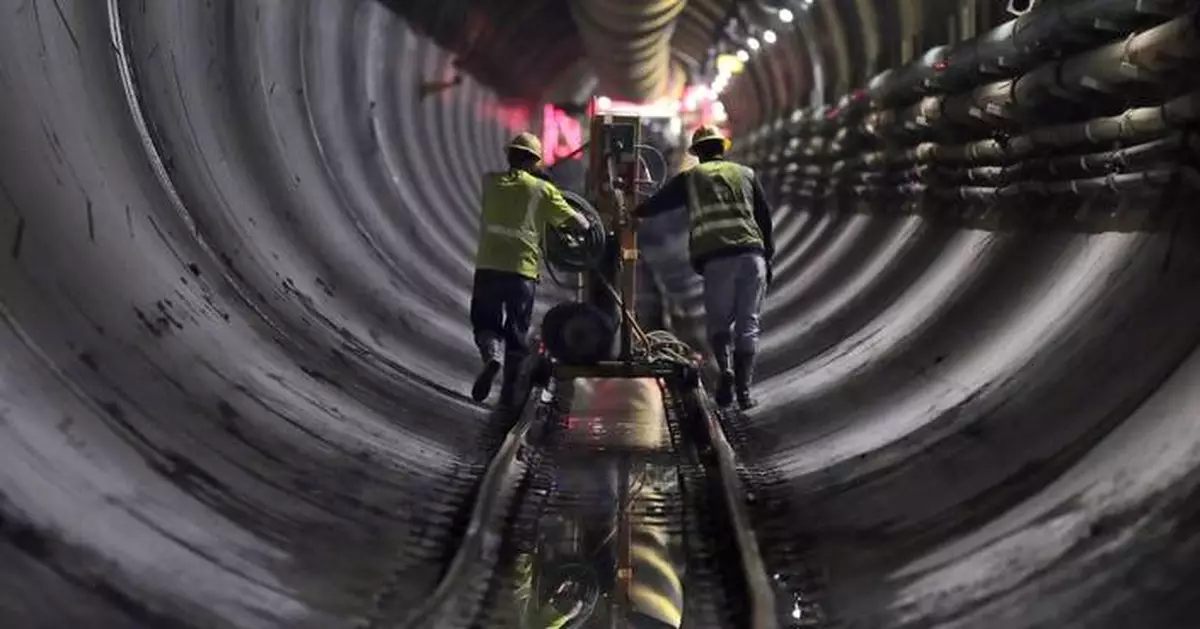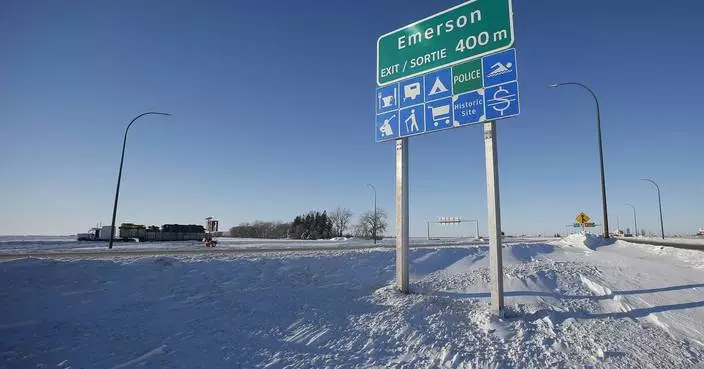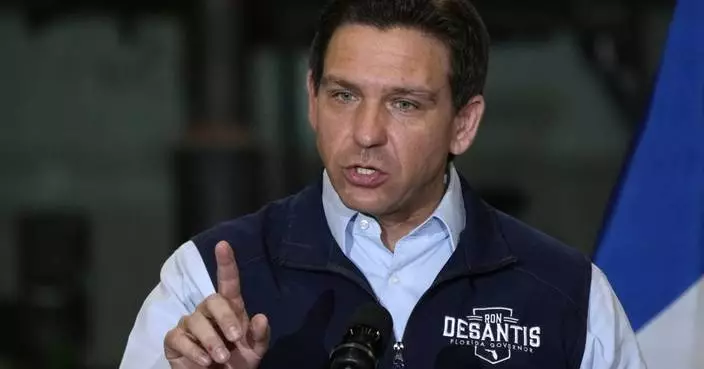NEW YORK (AP) — New York City on Monday issued its first drought warning in 22 years after months of little rain -- and will restart the flow of drinking water from an out-of-service aqueduct as supplies run low.
Dry conditions across the Northeast have been blamed for hundreds of brush fires. They had already prompted New York City and state officials to implement water-conservation protocols when Mayor Eric Adams upgraded the drought warning and temporarily halted a $2 billion aqueduct repair project that had stopped drinking water from flowing from some reservoirs in the Catskill region.
Last week, a park on the northern tip of Manhattan caught fire, sending smoke billowing across the city — less than a week after a brush fire in Brooklyn’s Prospect Park.
“New Yorkers should not under estimate the dry weather and what it means,” Adams said at a news conference, noting the recent fires. ”The fire risk is high and the fire risk is real."
The city may elevate the warning to an emergency if dry conditions persist. A drought emergency involves requiring residents and city agencies to cut down on water usage. Upgrading from a watch to a warning requires a range of conservation protocols, Adams said.
Water-saving measures planned for the coming weeks will include washing buses and subway cars less frequently and limiting water use for fountains and golf courses, the mayor said.
“Our city vehicles may look a bit dirtier, and our subways may look a bit dustier, but it’s what we have to do to delay or stave off a more serious drought emergency," he said.
At the same time on Monday, New York Gov. Kathy Hochul issued a statewide drought watch and elevated 15 counties to drought warning status, asking residents to conserve water whenever possible.
The shut-off of a stretch of the Delaware Aqueduct to address leaks had been in the works for years.
The aqueduct carries water for 85 miles (137 kilometers) from four reservoirs in the Catskill region to other reservoirs in the city's northern suburbs.
A portion of the aqueduct was shut off in early October but will now be turned back on because water levels across the city's reservoir system are too low to make up the difference, officials with the city Department of Environmental Protection said.
The last drought warning in New York City was issued in January 2002.

FILE — New York Mayor Eric Adams gets a refill of NYC tap water while speaking to reporters at a news conference about repairs to the water supply infrastructure in New York, Sept. 30, 2024. (AP Photo/Seth Wenig, File)
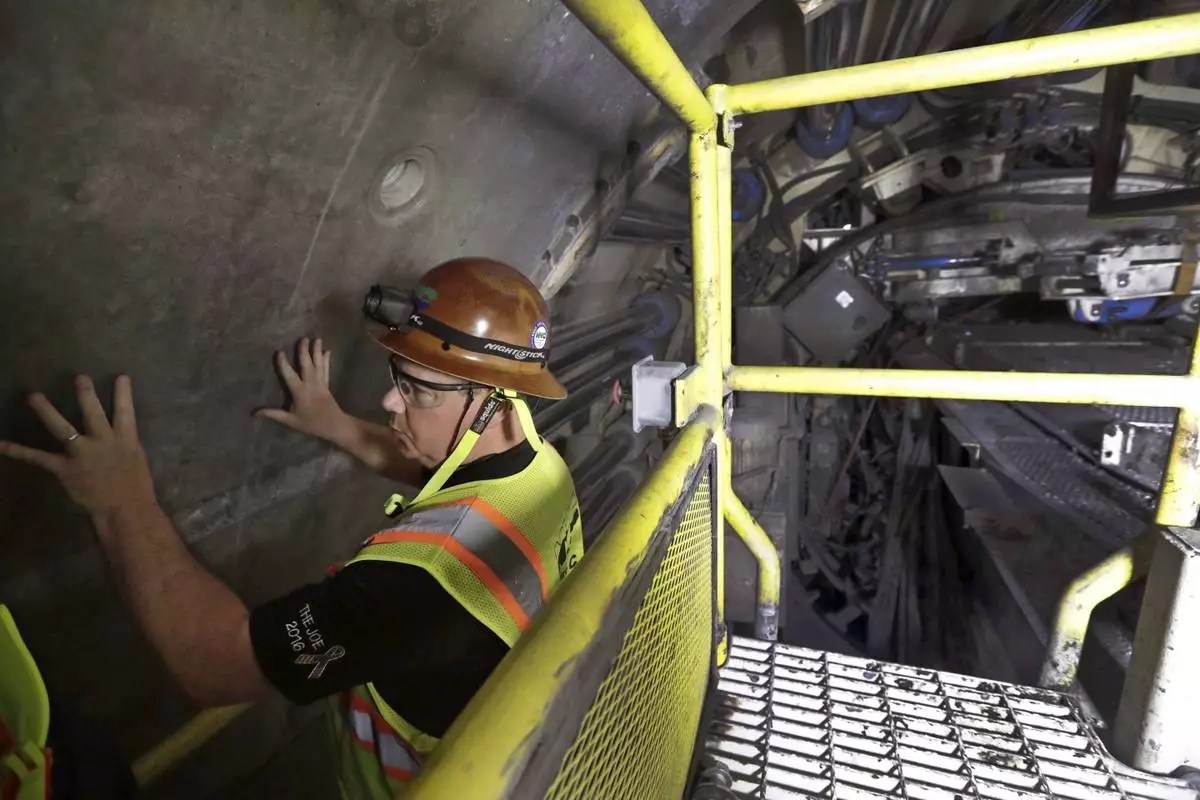
FILE - Mike Schmitt, project manager for the New York State Department of Environmental Protection, explains the design and construction of a 2.5-mile bypass tunnel for the Delaware Aqueduct in Marlboro, N.Y., May 16, 2018. (AP Photo/Julie Jacobson, File)

FILE - Tunnel workers push equipment up a rail track to a machine boring a 2.5-mile bypass tunnel for the Delaware Aqueduct in Marlboro, N.Y., May 16, 2018. (AP Photo/Julie Jacobson, File)
WASHINGTON (AP) — President Joe Biden is requesting nearly $100 billion in emergency disaster aid after Hurricanes Helene and Milton, and other natural disasters, telling lawmakers that the money is “urgently needed.”
The letter Monday to House Speaker Mike Johnson comes as lawmakers meet during a lame-duck session to finish key priorities before making way for a new Congress and the incoming Trump administration. Biden said he has met firsthand with those harmed by the storms and he heard what residents and businesses needed from the federal government.
"Additional resources are critical to continue to support these communities,” Biden said.
The largest share of the money, about $40 billion, would go to the main disaster relief fund at the Federal Emergency Management Agency. The fund helps with debris removal, repairing public infrastructure and providing financial assistance to survivors.
Biden said the fund would face a shortfall this budget year without additional money. He said that would not only affect the agency's ability to provide lifesaving assistance to survivors, but also would slow recovery efforts from prior disasters.
An additional $24 billion would help farmers that have experienced crop or livestock losses, and $12 billion would go toward helping communities recover through block grants administered by the Department of Housing and Urban Development.
Some $8 billion more would help rebuild and repair highways and bridges in more than 40 states and territories. The administration is also seeking $4 billion for long-term water system upgrades to mitigate future damage from natural disasters.
The Small Business Administration has run out of money for a program that provides low-interest loans for businesses, nonprofits and homeowners trying to rebuild after a disaster. Biden is seeking $2 billion for that program. Several other agencies would also receive emergency funds if Congress agrees to the full request.
Lawmakers were expecting a hefty number from the administration. Johnson, R-La., said Congress will evaluate the request and “we’ll make sure we deliver for the hurricane victims and the people that have suffered from that.”
Johnson had also visited western North Carolina after Hurricane Helene to assess the damage. At the time, he said Congress would act in a bipartisan fashion to help communities recover, but he also said it would be ”the appropriate amount that the federal government should do.”
With many Republicans campaigning on reducing federal spending, there could be some debate about portions of Biden's request. The federal government doesn't help with every disaster. It generally gets involved only if the needs are above the ability of a community or state to handle.
Republicans are also outraged that a FEMA employee directed workers helping hurricane survivors not to go to homes with yard signs supporting Donald Trump's presidential campaign. The agency's leader, Administrator Deanne Criswell, said the employee was fired and the directive was a clear violation of the agency's core values to help people regardless of political affiliation.
The Senate Appropriations Committee is expected to hear Wednesday from the heads of several of the government agencies that would receive funding through Biden's request. It's possible that emergency aid could be attached to any spending bill designed to keep federal agencies operating after current funding expires Dec. 20.
Biden noted that Congress had provided more than $90 billion in aid after Hurricane Katrina nearly two decades ago, and more than $50 billion after Hurricane Sandy in 2013. He urged Congress to take “immediate action.”
“Just as the Congress acted then, it is our sworn duty now to deliver the necessary resources to ensure that everyone in communities reeling from Hurricanes Helene and Milton — and those still recovering from previous disasters — have the Federal resources they need and deserve,” Biden wrote.
——
AP Congressional Correspondent Lisa Mascaro contributed to this report.
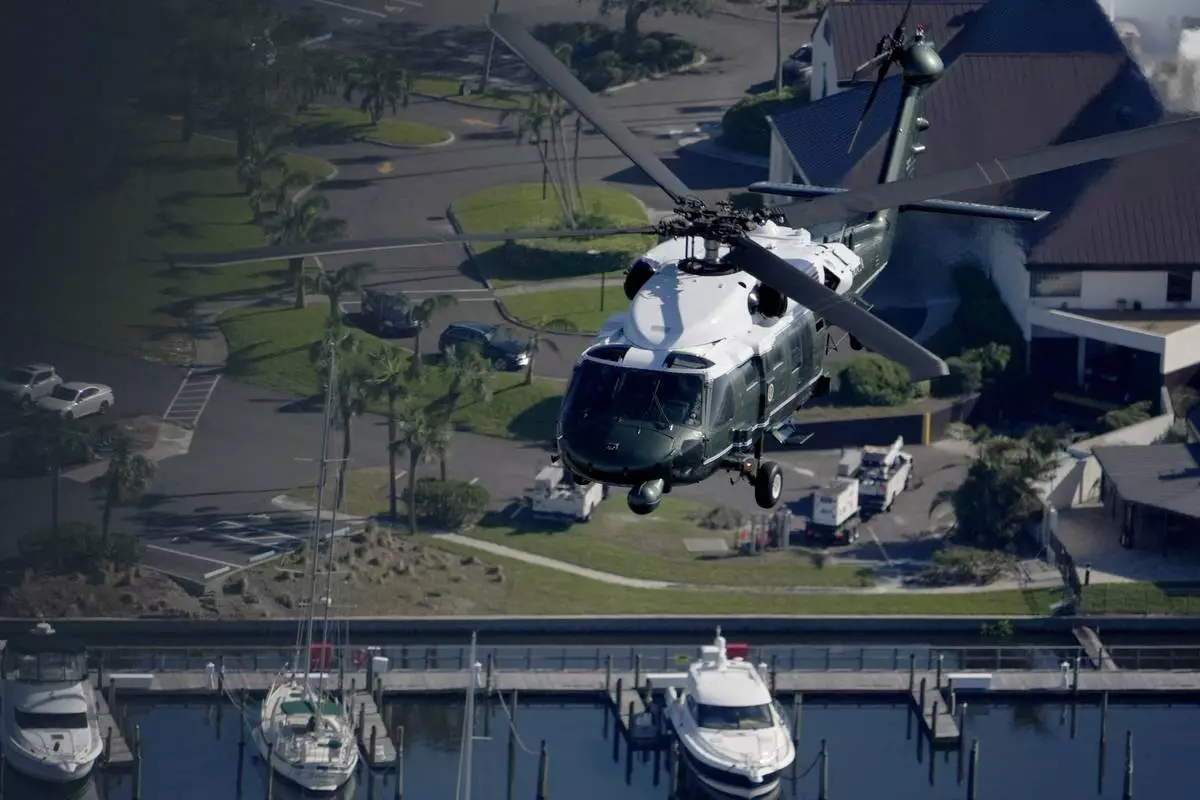
FILE - With President Joe Biden aboard, Marine One surveys areas affected by Hurricane Milton in Florida, from Tampa to St. Petersburg, Oct. 13, 2024. (AP Photo/Manuel Balce Ceneta, File)

FILE - President Joe Biden speaks following a briefing by federal, state, and local officials in St. Pete Beach, Fla., during a tour of areas affected by Hurricane Milton, Oct. 13, 2024. (AP Photo/Manuel Balce Ceneta, File)
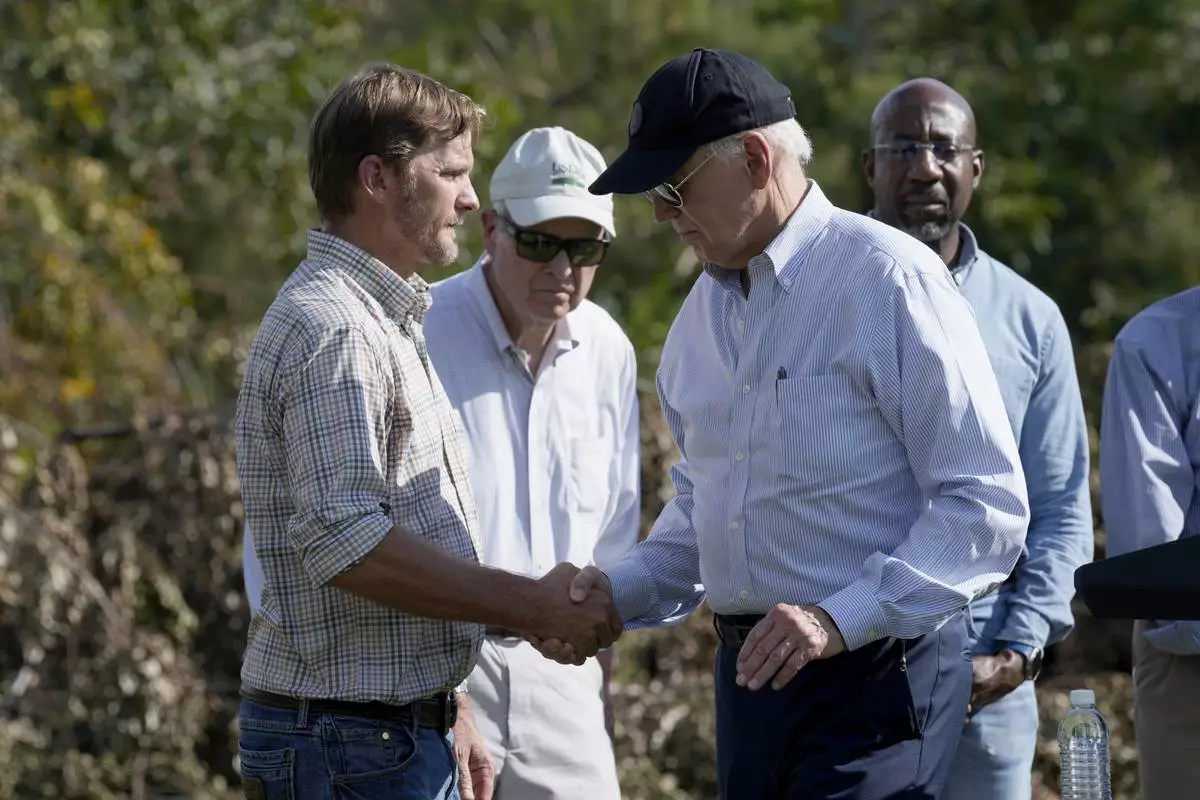
FILE - President Joe Biden, right, shakes hands with Buck Paulk, property manager of Shiloh Pecan Farm, after he spoke at the farm in Ray City, Ga., Oct. 3, 2024, as part of his trip to see areas impacted by Hurricane Helene. Looking on at right is Sen. Raphael Warnock, D-Ga. (AP Photo/Susan Walsh, File)
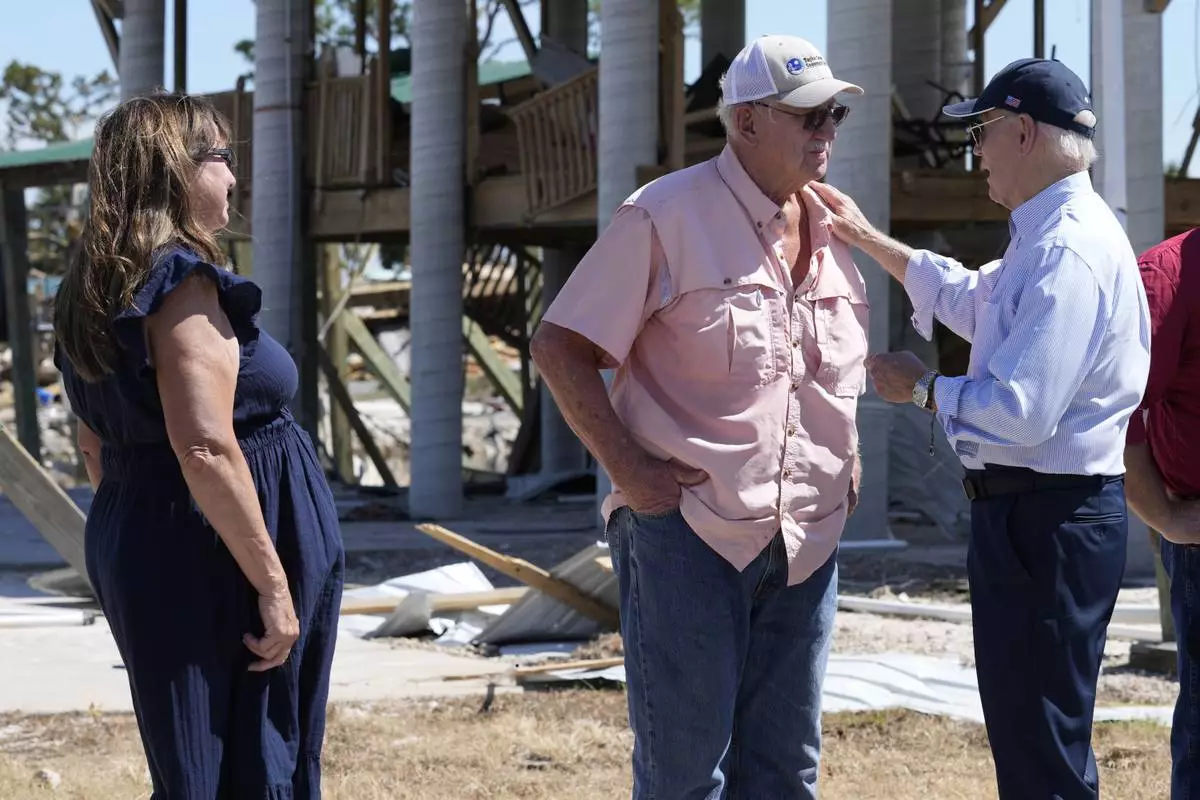
FILE - President Joe Biden, right, greets people in Keaton Beach, Fla., Oct. 3, 2024, during his tour of areas impacted by Hurricane Helene. (AP Photo/Susan Walsh, File)





